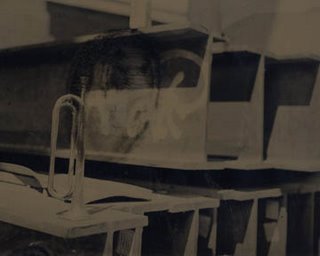Many hours spent obsessing over photography.
 One of the difficult parts of having a severely broken arm has been a general inability to do much of anything other than rest and recuperate. My movements have been limited; my energy has been limited; an almost complete lack of exercise has left me sluggish and weak (going from an average of biking 7 miles up to 6 days per week down to walking up to 2 miles a day, tops)... It's frustrated me and worn me out.
One of the difficult parts of having a severely broken arm has been a general inability to do much of anything other than rest and recuperate. My movements have been limited; my energy has been limited; an almost complete lack of exercise has left me sluggish and weak (going from an average of biking 7 miles up to 6 days per week down to walking up to 2 miles a day, tops)... It's frustrated me and worn me out. My vacation refreshed me, and the many good things about the trip put a spark back into me. I've been taking photos again; I've been printing in alternative photographic processes again. And I've been making fabulous progress.
*
Up until recently, I've been hampered by a long series of technical challenges which sucked. All of the alternative process prints I have been making (until this weekend, at least) are made through direct contact with a negative of the same size: they are not made by enlargement. Most of my early prints lacked perfect contact with the printing paper, due to an imperfect contact printing frame which held the negative and paper together, and so they had blurry or soft spots in each print. I bought some salvage glass (old medicine cabinet doors) at a salvage yard that provide much more reliable contact under clamps. My old inkjet printer, which I used to make digital negatives, refused to accept monochrome mode, and so would print my negatives in inconsistent colors, from yellow to violet, so I couldn't control the density of my negatives, and so couldn't control the density of my prints. I've now purchased a new inkjet printer, and it makes GORGEOUS, fine, completely consistent negatives (and gorgeous photo prints, too). I lacked an archival washing method, and so failed to produce prints that I had confidence would age well; some of the silver nitrate-containing experimental prints displayed stains over time. I now have an archival print washer. And so on.
Between many experiments and new tools, I'm making some of my best prints yet. I'm working up portfolios of them now, and should try to post samples of them soon.
BUT, instead of showing you some of my well-made prints that show off my ever-improving skills, I'm going to wallow in the thrill of discovery, and post a sample of something I've just taken up and appear to suck at: wet plate collodion on metal! The image with this post is a crop of a 4" x 5" ferrotype or tintype. Tintypes were popular during the U.S. civil war, and are a lot of effort to make. A polished sheet of metal is coated with a volatile (read "potentially explosive") collodion mixture, dipped in silver nitrate, slipped into a film holder with a dark slide, exposed in a camera while still wet, developed while still wet, fixed in one of two fixers (the one on this page was fixed in a nasty-smelling potassium cyanide solution), washed, dried, and varnished over an open flame with a flammable mixture of oil of lavender, gum sandarac (dried tree sap), and 190 proof alcohol. The result is a glossy in-camera positive that is grainless, retro-cool, and a bit hard to read.
The image on this page is the first plate I made that APPEARED to come out well exposed and with good contrast (for this process - when you're working in silver on a black background, this is a relative thing), but which revealed that it had been scraped by the film holder after the image dried. The round circle on the bugle and on the beam behind it isn't spray paint, it's a flaw in the surface of the exposed collodion. I'm posting it here anyway, with the edges of the plate cropped out. I'm doing this because I am sentimentally attached to this flawed plate, and so that you'll be impressed when I show you the better ones. :-)
I plan to make more tintypes in the near future (despite a variety of barriers, only some of which involve common sense), and also some wet plate collodion images on glass, which are called ambrotypes.
I'll also be trying yet another process that is completely new to me later this week... But I'll write about that after it happens.
Yes, alternative process fetishism is a strange thing. And a helluva lotta fun.
posted by Arlene (Beth)10:53 PM